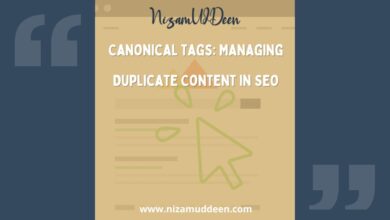Are you struggling to understand how to effectively use primary keywords in your content?
Wondering why your SEO efforts aren’t yielding the desired results?
Pay attention to how mastering primary keywords can transform your online presence.
Discover the secrets to unlocking the power of primary keywords. Learn how choosing the right primary keywords can significantly boost your website’s visibility and search engine rankings.
Understand the impact of keyword research on attracting targeted traffic and increasing conversions.
Imagine being able to consistently rank at the top of search engine results pages (SERPs) for your chosen keywords. Picture your content effortlessly attracting the right audience, leading to increased engagement and sales.
You can gain a competitive edge and establish your authority in your industry by mastering primary keywords.
Ready to take your SEO game to the next level?
Start learning how to identify and optimize primary keywords today.
What is Primary Keyword?
A primary keyword, also known as a focus keyword or main keyword, represents the central theme of a webpage or piece of content.
In SEO, the primary keyword is crucial because it helps search engines understand the content’s topic. It determines how and where the content appears in SERPs.
Content creators influence search engine algorithms by choosing and optimizing around a primary keyword.
This alignment improves the content’s visibility and ranking in search results.
The primary keyword guides algorithms to categorize and rank content based on relevance and user intent.
Careful selection and optimization of a primary keyword are vital for effective SEO strategies. They enhance the likelihood of attracting targeted organic traffic and improving user engagement and conversions.
Characteristics of a Primary Keyword:
- Choose a primary keyword that directly matches your content’s main topic.
- Opt for a primary keyword with high search demand to attract more traffic.
- Align your primary keyword with what users are looking to achieve—whether it’s learning, finding, or buying.
- Balance between highly competitive and less competitive keywords to optimize your SEO strategy.
Importance of Primary Keywords in SEO:
You make it easier for search engines to understand and rank your content appropriately in SERPs by optimizing your content around a primary keyword.
A primary keyword helps you stay focused on a specific topic, making your content more relevant and coherent for your audience.
Ranking well for relevant primary keywords can attract targeted traffic to your website, increasing the likelihood of engagement, conversions, and achieving your business goals.
How to Choose a Primary Keyword?
Use keyword research tools (e.g., Google Keyword Planner, SEMrush, Ahrefs) to find relevant keywords that have a good balance of search volume and competition.
Ensure the primary keyword accurately reflects the content of your webpage or article. It should be seamlessly integrated into your content.
Consider using long-tail keywords (phrases with more words) that are more specific and less competitive, yet still have decent search volume. These can be effective primary keywords for niche topics.
Always think about what the user intends to find when searching for your primary keyword. Tailor your content to meet that intent effectively.
Criteria for Selecting Primary Keywords
The primary keyword should directly relate to the main topic or theme of your content. It should accurately reflect what users are searching for when they look for information related to your content.
Relevance ensures that your content meets the expectations of users and search engines. It helps in attracting targeted traffic that is genuinely interested in your content, thereby improving engagement metrics and conversion rates.
Search Volume:
Search volume refers to how frequently a particular keyword is searched for on search engines, such as Google. Keywords with higher search volume generally indicate greater interest and potential traffic.
While high search volume is desirable, extremely competitive keywords may be harder to rank for, especially for new websites or those with lower domain authority.
Balancing search volume with competition levels is crucial for optimizing your chances of ranking well.
Competition:
Competition in SEO refers to how difficult it is to rank for a specific keyword due to the number of other websites targeting the same keyword.
Assess the competitiveness of a keyword by analyzing the strength and authority of competing websites, as well as the number of pages already optimized for the keyword.
Choose primary keywords where you have a reasonable chance to rank based on your current SEO capabilities.
User Intent:
User intent refers to the purpose behind a user’s search query—whether they are looking for information, intending to make a purchase, seeking a specific website, etc.
Align your primary keywords with the intent behind user searches.
This ensures that your content addresses their needs effectively, leading to higher engagement and conversion rates.
A primary keyword is the core term or phrase that defines the main topic of your content and plays a pivotal role in SEO by guiding search engines and attracting targeted traffic to your website.
Techniques for Integrating Primary Keywords Naturally
Integrating primary keywords naturally into your content is a fundamental aspect of effective search engine optimization (SEO).
You not only improve its relevance and visibility to search engines but also enhance its readability and value to your audience by strategically incorporating these keywords throughout your content.
Strategic Placement:
Include the primary keyword near the beginning of the title tag to signal the topic of your content to search engines and users.
Incorporate the primary keyword naturally within the meta description, which appears in search engine results and influences click-through rates.
Ideally, the primary keyword should be included in the URL structure to reinforce relevance and clarity for both users and search engines.
Header Tags (H1, H2, etc.):
Use the primary keyword in the main heading (H1 tag) of your content to clearly indicate the topic.
Utilize variations or related keywords in subheadings (H2, H3 tags) to organize content logically and support the main topic.
Content Body:
Integrate the primary keyword naturally throughout the content, ensuring it fits contextually and enhances readability.
Avoid keyword stuffing—use variations, synonyms, and related terms to maintain natural flow and provide comprehensive coverage of the topic.
Aim for a keyword density that feels natural (typically 1-2% of the total word count), focusing more on quality and relevance than exact keyword frequency.
Image Alt Text:
Include the primary keyword in alt texts of relevant images on your page.
This not only improves accessibility for visually impaired users but also provides additional context to search engines about the content of your images.
Benefits of Optimizing Content Around Primary Keywords
Properly optimized content is more likely to rank higher in search engine results pages (SERPs) for relevant queries, increasing organic traffic.
Clear and relevant use of primary keywords helps users quickly understand the content’s topic and relevance to their search queries.
Well-crafted title tags and meta descriptions incorporating primary keywords can lead to higher click-through rates from search engine users.
On-page optimization around primary keywords supports broader SEO efforts, including off-page factors like backlinks and social signals.
You can optimize your content around primary keywords to improve its visibility, relevance, and engagement with both users and search engines by implementing these techniques and practices effectively.
Keyword Clustering and Semantic SEO
Keyword clustering involves grouping related keywords into clusters or themes.
This strategy helps to organize and optimize content around broader topics rather than individual keywords, which can improve overall SEO performance.
How It Works:
Identify a set of keywords that are closely related in terms of topic or user intent. These could be variations, synonyms, or related terms.
Organize these groups of keywords into clusters, with each cluster centered around a primary keyword (pillar content) and supporting keywords (cluster content).
Develop content that covers the primary keyword comprehensively (pillar content) and link this content to related cluster content.
This internal linking strategy strengthens the topical authority of your website.
Benefits:
By clustering keywords, you create content that is more relevant and comprehensive to users’ search queries, improving user experience and engagement.
Search engines recognize the thematic relevance of your content clusters, potentially boosting rankings for multiple related keywords.
It aligns with user intent by providing in-depth coverage of topics, addressing various aspects of a user’s query or interest.
Semantic SEO
Semantic SEO refers to optimizing content around the meaning behind the words, rather than just the exact keywords.
It focuses on understanding the context, intent, and relationships between words and concepts.
How It Works:
Search engines like Google use AI and Natural Language Processing to understand the context and semantics of content.
Include related terms, synonyms, and entities that are semantically related to your primary keyword within your content.
Implement structured data markup (schema markup) to provide additional context to search engines about the content on your pages.
Benefits:
Semantic SEO helps content rank for a broader range of related queries, enhancing overall visibility.
By focusing on the meaning of content, you provide more valuable and relevant information to users, increasing engagement and reducing bounce rates.
As search engines evolve, semantic SEO prepares your content to remain relevant and effective amidst algorithm updates and changes in user behavior.
Advanced keyword strategies such as keyword clustering, semantic SEO, and integrating primary keywords across various content types are essential for optimizing content comprehensively.
Summary of the Topic
- What is Primary Keyword?
- A primary keyword, also known as a focus or main keyword, represents the central topic of your content.
- It helps search engines understand what your content is about and determines its placement in search engine results pages (SERPs).
- Techniques for Integrating Primary Keywords Naturally
- Strategic Placement: Ensure your primary keyword appears in crucial locations such as the title tag, meta description, URL, and within the first paragraph.
- Header Tags: Use the primary keyword in headings (H1, H2, H3) to organize content logically and enhance readability.
- Content Body: Incorporate the primary keyword naturally throughout the content, maintaining readability and avoiding keyword stuffing.
- Image Alt Texts: Include the primary keyword in alt texts of relevant images to improve accessibility and provide additional context to search engines.
- Keyword Clustering and Semantic SEO
- Keyword Clustering: Group related keywords into clusters to create comprehensive content around broader topics. This strategy enhances relevance and SEO performance by covering various aspects of a user’s query.
- Semantic SEO: Focus on the meaning behind words and context rather than just exact keywords. Use related terms, synonyms, and structured data to improve content relevance and search visibility.
You can create content that not only ranks well in search engine results by leveraging these techniques and strategies. Also provides valuable and relevant information to your audience. Mastering primary keywords and implementing advanced keyword strategies like clustering and semantic SEO will help you achieve better engagement, higher rankings, and ultimately, greater success in your digital marketing efforts.



